OPOD - New Zealand Halos - To enhance or not to enhance?
OPOD - New Zealand Halos: To Enhance or Not to Enhance?
When it comes to capturing the beauty of atmospheric optics, photographers often face a dilemma: should they enhance their images or present them as they were straight from the camera? This question is particularly relevant when dealing with rare and elusive halos, such as the ones observed in New Zealand on the 21st of April. In this article, we will explore the pros and cons of image enhancement and how it can impact our perception of these natural phenomena.
The initial photograph, untouched by any manipulation, showcases a display of ice halos captured by Stefan Krivan in Manawatu, New Zealand. Among the halos visible in the image are the everyday 22° halo and a right-hand sundog. However, upon closer examination, there are hints of additional halos above the 22-degree circle. This area is worth exploring further to identify the upper tangent arc and the rare Parry arc.
Image enhancement serves multiple purposes. First and foremost, it aims to render the image more accurately, capturing the true essence of what was seen by the naked eye. Secondly, it can be used to modify the aesthetics of the image, creating a visually appealing composition. Lastly, enhancement techniques can help reveal fainter halos that may not be readily visible in the original photograph.
One approach to enhancing the image is to adjust its levels using software like PhotoShop. By creating a duplicate layer and carefully adjusting the sliders for brightness and contrast, the photographer can create a presentation-ready version of the image. However, it is important to strike a balance between enhancement and maintaining the authenticity of the scene. Overdoing the adjustments can result in an unrealistic and unpleasing image.
For those solely interested in revealing halos without much regard for aesthetics, a different processing technique can be employed. By further adjusting the levels to brighten specific areas above the 22-degree halo, faint halos can be brought to the forefront. However, this approach may lead to over-saturation and the loss of information in other parts of the image. It is crucial to exercise caution and find the right balance between halo visibility and unwanted artifacts.
Another technique used in image enhancement is unsharp masking. By applying this filter to a duplicate layer, faint details and halos become more evident. However, it is essential to carefully adjust the settings to avoid emphasizing unwanted artifacts and cloud streaks. The goal is to enhance the visibility of the halos while maintaining a natural-looking scene.
While image enhancement can provide valuable insights into the presence of rare halos, it is important to approach the results with skepticism. The introduction of misleading artifacts is a common concern raised by halo experts. One such technique that can introduce artifacts is embossing, which emphasizes faint arcs. However, the interpretation of these arcs should be confirmed by other photographs to ensure their validity.
In the case of the New Zealand halos, embossing revealed the presence of an upper Lowitz arc leaving the 22-degree halo and curving outwards to join the Parry arc. There is also a hint of the upper Lowitz arc curving in from the sundog to become tangent with the 22-degree halo. However, these observations remain tenuous until further supported by additional photographic evidence.
In conclusion, the decision to enhance or not to enhance atmospheric optics images is a personal one. While enhancement techniques can bring out hidden details and reveal rare halos, they should be used with caution to avoid distorting the natural appearance of the scene. Ultimately, the goal should be to strike a balance between enhancing the visibility of halos and preserving the authenticity and beauty of these mesmerizing atmospheric phenomena.
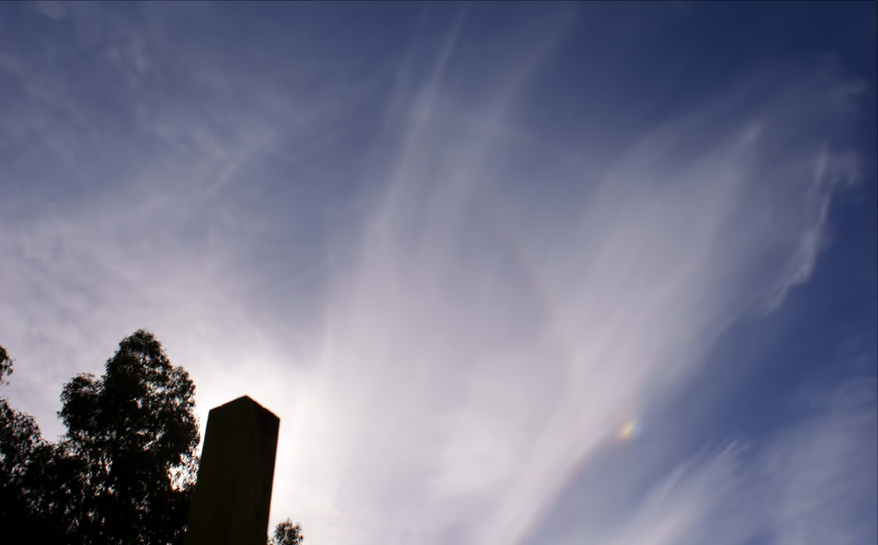
New Zealand Halos ~ 21st April
Stefan Krivan saw this ice halo display at Manawatu, New Zealand. It contained some everyday halos, a rare one and a very rare one but they had to be searched for!
©Stefan Krivan, shown with permission.
To Enhance or not to Enhance?
The topmost image is straight from the camera.
The streaky cirrus shows tantalizing halo fragments, part of the everyday 22° halo and a right-hand sundog. The parhelic circle links the sun to its dog. Something is above the 22 degree halo and it is always worth searching this area for an upper tangent arc or the more rare Parry arc.
Would image ‘enhancement’ tell more?
Image manipulation can be to render the image more akin to what was seen by eye or to modify its aesthetics. A third reason is to try to reveal fainter halos.

Here is a gentle manipulation for presentation purposes. It still preserves the truth but you would have to have been there to say whether it resembles the appearance and mood of the actual scene.
Levels were changed in PhotoShop. First, create a duplicate layer - never, ever, destroy or save over the original image! The right (bright levels) slider was eased leftwards watching the histogram display and taking care not to clip or over saturate important highlights. Then the middle (gamma) slider was moved slightly rightwards to change contrast.
Other changes are a matter of personal taste. But overdone they can give an unreal and even unpleasant looking image. Less is more.
There appear to be two halos above the 22 degree circle, an upper tangent arc and Parry arc.
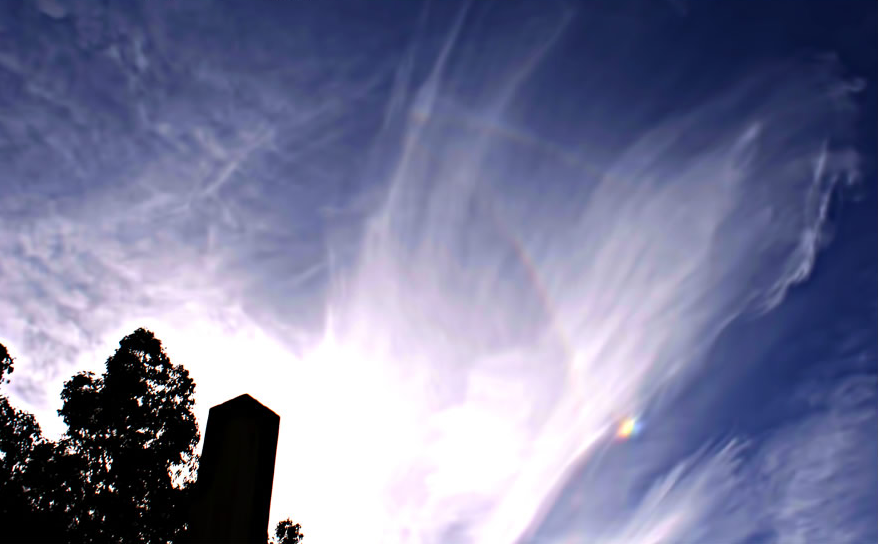
Now we are in the realm of processing purely to reveal halos and with little regard for aesthetics.
Levels were less kindly adjusted. The right (bright levels) slider was moved leftwards to brighten the area of interest above the 22 degree halo. The area around the sun becomes unpleasantly over-saturated and loses all information. The middle slider (gamma) was then adjusted to increase the halo contrast. There is little to be gained by going further with levels.
Next, the image was unsharp masked .filter -> sharpen -> unsharp mask.. Again, do this on a duplicate layer. Leave the middle 'radius' slider at about 1 pixel. Move the top slider (amount) all the way to the right. Then carefully increase 'radius' watching what happens. Faint details become more evident - and so do cloud streaks and artifacts! Strike a balance between halo visibility and unwanted details/artifacts. Then decrease 'amount' until halos are still visible but the scene is less extreme. Less is more.
There is a a clear extended upper tangent arc fragment and above it a suncave Parry arc. But look between the 22 degree halo and the UTA - Is that a trace of an upper Lowitz arc?
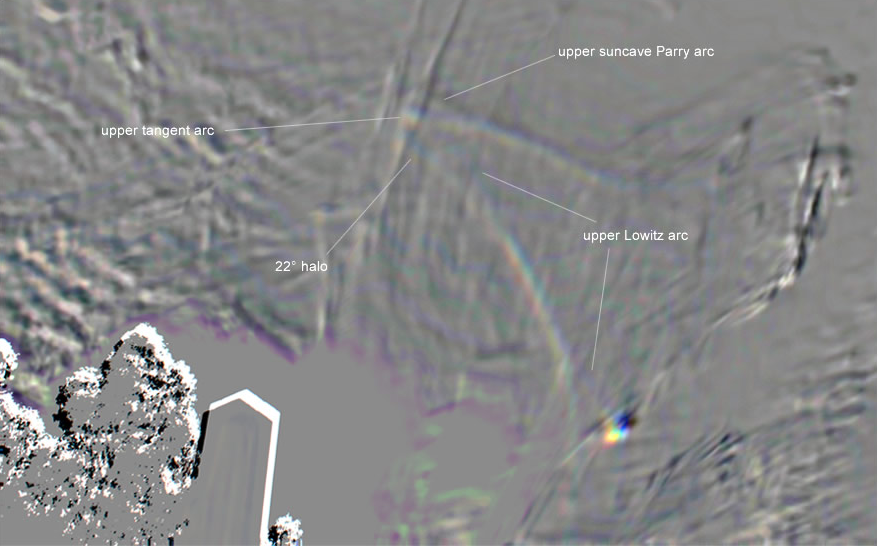
This bit is disliked by some halo experts because it can introduce misleading artifacts.
The unsharp masked image has been embossed .filter -> stylize -> emboss.. Start with the 'amount' slider in mid position and the height at ~20%. Then swivel the 'angle' to attempt to show up faint arcs. The ones at left had the angle pointer at 2pm to highlight any Lowitz arc.
The emboss is revealing. The upper Lowitz arc is seen leaving the 22 degree halo at 2pm and curving outwards to join the Parry arc. Even more, there is a hint of the upper Lowitz arc curving in from the sundog to become tangent with the 22 degree halo. With the eye of faith one might even discern a faint trace of a middle Lowitz arc beneath the sundog.
All this is tenuous unless confirmed by other photographs. The lower image, similarly processed, hints also at an upper Lowitz arc but not as clearly.
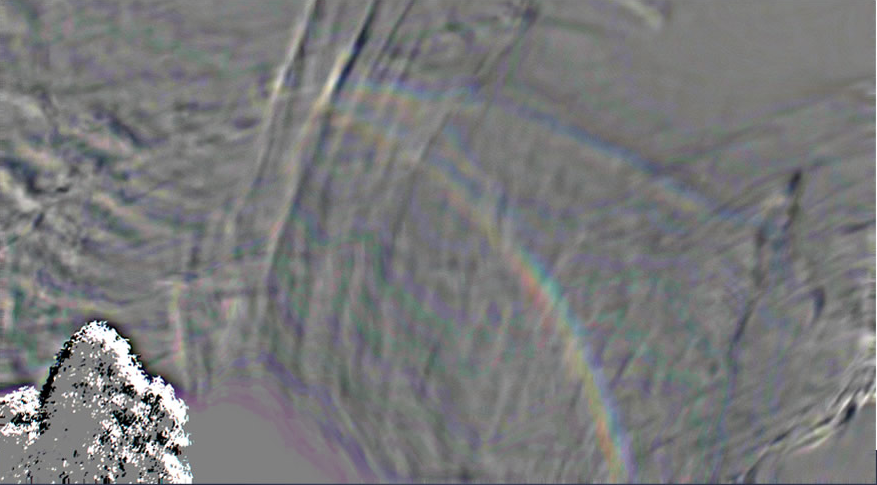
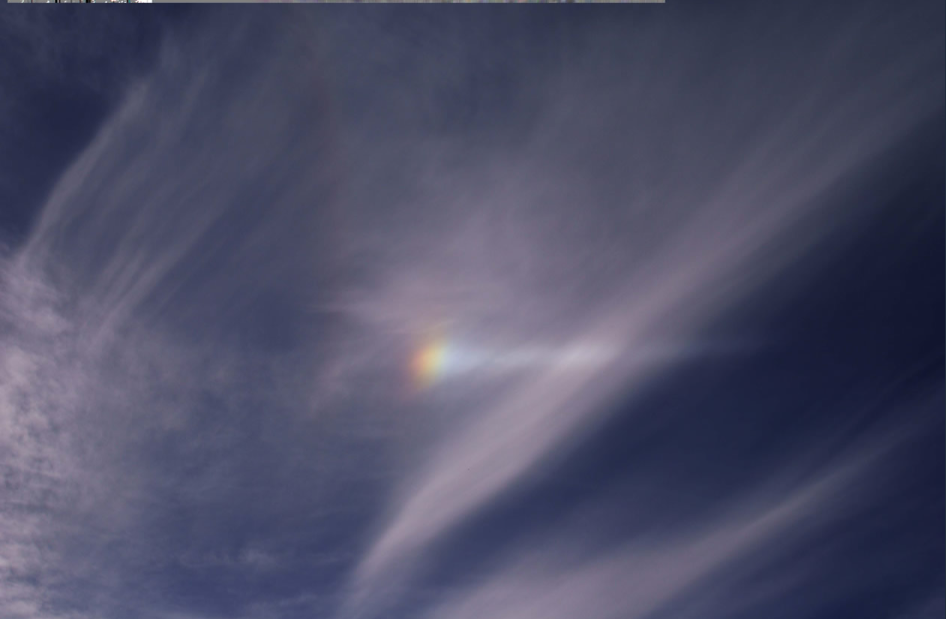
Note: this article has been automatically converted from the old site and may not appear as intended. You can find the original article here.
Reference Atmospheric Optics
If you use any of the definitions, information, or data presented on Atmospheric Optics, please copy the link or reference below to properly credit us as the reference source. Thank you!
-
<a href="https://atoptics.co.uk/blog/opod-new-zealand-halos-to-enhance-or-not-to-enhance/">OPOD - New Zealand Halos - To enhance or not to enhance?</a>
-
"OPOD - New Zealand Halos - To enhance or not to enhance?". Atmospheric Optics. Accessed on April 19, 2024. https://atoptics.co.uk/blog/opod-new-zealand-halos-to-enhance-or-not-to-enhance/.
-
"OPOD - New Zealand Halos - To enhance or not to enhance?". Atmospheric Optics, https://atoptics.co.uk/blog/opod-new-zealand-halos-to-enhance-or-not-to-enhance/. Accessed 19 April, 2024
-
OPOD - New Zealand Halos - To enhance or not to enhance?. Atmospheric Optics. Retrieved from https://atoptics.co.uk/blog/opod-new-zealand-halos-to-enhance-or-not-to-enhance/.